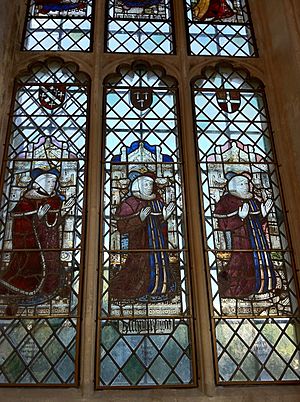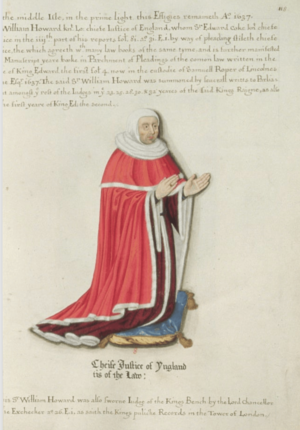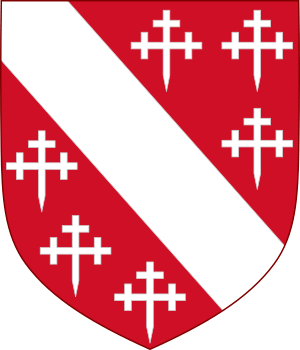William Howard (judge) facts for kids

Sir William Howard (born by 1225 – died 1308) was an important lawyer from East Winch and Wiggenhall in Norfolk, England. He became a judge in a major court called the Court of Common Pleas. He is known as the first male ancestor of the famous House of Howard family, which includes the Dukes of Norfolk. This has been proven by historical research.
Who Was Sir William Howard?
Sir William Howard's father likely came from the town of Lynn in Norfolk. He might have been a merchant, someone who bought and sold goods.
Sir William Howard's Career as a Judge
Sir William Howard first appears in old records in 1277. This is when he bought land in East Winch, Norfolk, which became his main home. He was already working as a lawyer for people in Norfolk by the late 1270s. This means he probably used his earnings as a lawyer to buy the land.
By the mid-1280s, Howard was a special kind of lawyer called a serjeant-at-law. He worked in important traveling courts called eyre courts. From 1285, he was a legal advisor for the Mayor and leaders of the busy port town of Lynn in Norfolk.
He became a judge for local trials (a Justice of Assize) in 1293. Then, from 1297 until 1307, he served as a judge in the Court of Common Pleas. This was a very important court. You can see him in a stained glass window from around 1500 in Long Melford Church in Suffolk. He is shown wearing his judge's robes.
Even though the Howard family claimed in the 1400s that he became the Chief Justice of the Court of Common Pleas, there is no proof of this today.
In 1298, he bought a large house and land at East Winch from the Grancourt family. He kept buying more land in the area. Howard also attended Parliament in 1302 as a judge. He was part of a special court circuit in 1307. He passed away sometime before August 24, 1308. This is when records show someone else took his place as a judge. He was buried in the Church of East Winch.
Sir William Howard's Family
Sir William Howard was married two times:
- His first wife was Alice de Ufford. They had children together:
* Sir John Howard I (died between 1311 and 1333) was their oldest son. He lived at East Winch. He was a Sheriff for Norfolk and Suffolk. He was also the Governor of Norwich and a close helper to King Edward I. He married Joan de Cornwall. She was the sister and heir of Richard de Cornwall. She was also a descendant of Richard, Earl of Cornwall, who was King John's second son. * Sir John Howard II (died after 1388) was the son of Sir John Howard I. He grew up in the king's household. He later became an Admiral, leading the Northern Fleet. He married Alice de Boys. She was the daughter and heir of Sir Robert de Boys. They were the great-great-grandparents of John Howard, 1st Duke of Norfolk. * Sir Robert Howard (died 1388) was the son of Sir John Howard II. He lived in Wiggenhall and East Winch. He died before his father. He married Margaret Scales (died 1416). She was the daughter of Robert de Scales, 3rd Baron Scales. * Sir John Howard III (around 1366-1437) was the son of Sir Robert Howard. He lived in Wiggenhall and East Winch. He was the grandfather of John Howard, 1st Duke of Norfolk.
- His second wife was Alice Fitton. She was the daughter and heir of Sir Edmund Fitton. Sir William inherited Fitton Hall in Wiggenhall through this marriage. Today, only the moat (a ditch around the old hall) of Fitton Hall remains. Sir William and Alice Fitton did not have any children.



